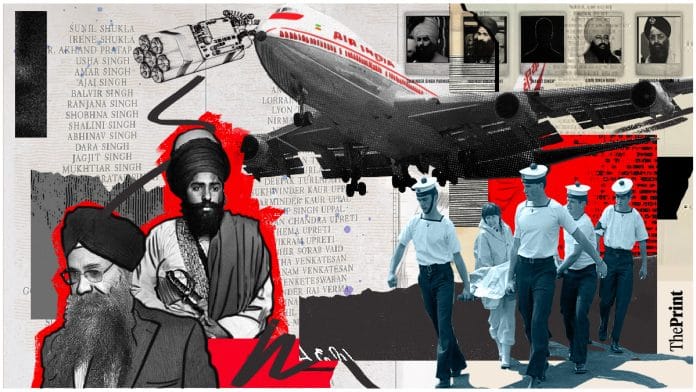New Delhi: The Royal Canadian Mounted Police (RCMP) has finally uncovered the identity of ‘Mr X’, a man involved in testing a bomb in Vancouver Island only weeks before the Kanishka bombing, but has not revealed it, citing Canadian privacy laws.
On Saturday, RCMP Assistant Commissioner David Teboul, while not identifying ‘Mr X’, confirmed his death during an event marking 40 years since the bombing, with dozens of relatives of the victims attending the memorial.
On 23 June 1985, a mid-air bomb explosion on Air India Flight 182 off the coast of Ireland left all 329 people on board dead. En route from Montreal to Mumbai via London, the aircraft had Canadian citizens of Indian origin as the majority of its passengers.
For the longest time during the Kanishka bombing probe, investigators kept identifying one of the men behind the testing of the bomb as ‘Mr X’ because they could not pin down who he was. He reportedly died not very long ago without facing any charges, according to Canadian police.
The revelation comes at a time when diplomatic relations between Canada and India have shown signs of recovery. Prime Minister Narendra Modi met his Canadian counterpart, Mark Carney, on the sidelines of the G7 summit in Kananaskis, Canada earlier this month.
During the summit, India and Canada “agreed to take calibrated and constructive steps to restore stability” in their relationship, starting with the “early return of High Commissioners” to the each other’s capitals.
Bilateral ties had been under strain since former Canadian Prime Minister Justin Trudeau accused India of killing Sikh separatist Hardeep Singh Nijjar in British Columbia last year.
India had rejected the accusation, calling it “absurd”. However, soon, there was a pullback in diplomatic ties between the two countries. India then suspended visas for Canadians, and both countries expelled each other’s diplomats in a tit-for-tat move.
In his address at the memorial Saturday, David Teboul said that after the acquittals of key Kanishka bombing suspects in 2005, investigators had continued to work the case in the hopes of resolving “loose ends”, eventually finding out the identity of the man, who helped test the type of bomb that brought down the AI flight 40 years ago.
According to the RCMP, ‘Mr X’ travelled to Duncan, Vancouver Island, with the Kanishka bombing mastermind, Talwinder Singh Parmar, on 4 June, 1985. The two men joined Inderjit Singh Reyat, an electrician by profession, and went deep into a wooded area to test an improvised explosive device (IED).
Canadian Security Intelligence Service (CSIS) agents reportedly surveilled the trio after they heard an explosion in the area but mistakenly believed the sound to be coming from a gunshot and could not accuse the three of any wrongdoing.
Inderjit Singh Reyat, the only person ever convicted in the bombing, pleaded guilty to aiding in the construction of the bomb that exploded on AI-182 but claimed that he did not know the identity of ‘Mr X’. During the trial, Reyat committed perjury, which led to a longer sentence. Reyat has since served his time in prison and is now out of jail.
Talwinder Singh Parmar, the alleged mastermind of the bombing and founder of the banned Babbar Khalsa separatist group, was killed in a shootout with Punjab police in 1992.
During the memorial, David Teboul noted that while the investigation had continued, “there was very little realistic chance of seeing the matter go to another trial”. He added that the Kanishka bombing had been the “largest act of terrorism” in the history of Canada.
“So we, RCMP, have an obligation to memorialise it and pay respect every year,” Teboul told the assembled gathering.
A bomb in a suitcase set off mid-air in Air India Flight 182, killing 329 people, 307 passengers and 22 crew members. On board were 268 Canadian citizens, 27 British citizens, and 4 Indian citizens. The majority were of Indian ancestry.
Soon after, a second bomb on another Air India flight exploded prematurely at Tokyo’s Narita airport, killing two baggage handlers.
(Edited by Madhurita Goswami)
Also Read: ‘Air India ki flight mat lo’ — how Canadian neglect led up to Kanishka bombing 38 yrs ago






